|
In case you need a reason to avoid "Barebnb" By Zach Hively As you may imagine, traveling with 160 pounds of dog is a logistical challenge in any configuration. Ten 16-pound dogs? One 120-pound beast and forty one-pound chihuahuas? Makes me think I have it easy, what with just two dogs sniffing either side of 80. Even though I average a hand per leash, which I think is a positive, lodging establishments tend to have animal restrictions. They often limit us by quantity (“less than one”) or mass—as if purse pups are any quieter or less destructive than I am. So, for our recent semi-long-term travel booking, the boys and I turned to Barebnb. Barebnb, for the uninitiated, is the more honest and transparent copycat of a well-known home share platform. True to its name, it ensures the bare minimum: barely any assurances, barely any accountability. It also stands by the guarantee implied in those final three letters of the brand: you get a bed, for “b,” and for “n” you get not much else. Not even, it turns out, what’s included in the listing. Perhaps I am a petty b, which accounts for that final “b” floating around at the end of the brand name—but our accommodations lacked both so-called “kitchen essentials” AND a first-aid kit. All of this is no big deal until breakfast goes sideways. The only silver lining, I suppose, was that no one could put any salt in the wound. Still, this condo allowed dogs, plural, with emphasis on the “n”: not much restrictions and not much fees. In hindsight, these not-much’s may have been red flags. We needed a place to sleep besides the dog beds in the car, however, so we paid the nonrefundable booking fee through Barebnb and moved in. (Nonrefundable! That also begins with the letter n!) All told, the condo complex provided a charming experience of community and culture. We got not much chance to be charmed, however. Our time was largely consumed by evading the many free-roaming dogs drawn in by the lack of fees and restrictions, particularly those under the guardianship of underqualified toddlers, and dodging the many underutilized dog-poop-disposal stations. My trip afield, in fact, was dominated by making certain my dogs kept me comfortable. The actual purpose for our travel fell by the wayside. I don’t even recall the purpose for our travel, beyond doing our civil best to earn a positive guest review on Barebnb. We soon gave up on that too. Late one weekend morning, in a rare moment free of neighbor dogs and their pint-sized handlers, my dogs and I sat on the front stoop of our ground-level unit. We sipped coffee and admired the parking lot. A car pulled into the numbered spot next to ours. This was business-as-usual. Cars frequented the numbered spot next to ours. They never came back. This, I was fine with. Most of them were terrible parkers. This particular driver—let’s call him “John” because you’ll see why—sat there for some minutes. The dogs and I were aware of him, but none of us barked. Him sitting there was the most charming aspect of the condo complex we’d yet seen. At some length, a woman from the unit adjacent to ours went and chatted with John through the car window. John drove off; the woman came back up the short walk to our building and complimented the cuteness of my dogs. I immediately suspected her to be of the highest discernment and character. “My friend is such a wuss,” she said. “He was like, ‘I’m not coming out of the car with this dude and his big dogs staring at me. Nuh uh.’” We three fellas were appropriately flattered. She kvetched about our mutual Barebnb host and the extortion-level rates we paid. Something on my face or my dogs’ faces prompted her to lean in like a co-conspirator; whatever she saw on our faces, we were honestly just pleased that one single neighbor was not stooping on our stoop without picking it up. We weren’t asking for what came next.
“John wasn’t my friend,” she confided, her voice lowering, a subtle menace lacing through her long fingernails—which she tapped on my arm. “I’m an escort. You all are scaring off my customers.” That’s how, at eleven o’clock on a Sunday, we were taken aback. The listing certainly had not indicated THIS as a neighborhood amenity! The threat, though quiet, was clear—we, intimidating though we may be, needed to stay out of her way—or else. Or else? Or else risk the wrath of the next John, or the next—one with better threat assessment capabilities? Worse, what if the Barebnb host was in on this ring? Were we, the rare legitimate guests, the front for a much shadier business model? Look, I don’t care that this woman makes her living as an on-site escort. If the industry were safe and regulated, I might have considered the gig in order to pay for our Barebnb stay. But I cared that we had just been confronted, on our own rented stoop, about interfering with illicit activity—in broad daylight—on the Christian god’s holy day, for whatever that was worth. My priorities became: 1) get us the everloving heck out of there; 2) get refunded for our unused dates, because if ever circumstances were extenuating, these were. Getting out, while stressful, was doable. We regrouped before one John or another got wind of our whereabouts. The refund, though, proved impossible. Our hosts cared as much about the unlicensed practice in their rented unit as they did about our kitchen’s lack of cooking oil. It looked increasingly like the foot traffic was buttering their bread. So I jumped on with Barebnb Support, thinking they’d like to, you know, support me. Hours of phone calls, hysterics, and closed support tickets later, Support’s response came down to: “We talked to the host. They don’t want to refund you. And since both prostitution and lack of safety due to large quantities of illegal activity with bad parkers are not covered in our BareCoverage policy, you’re also getting boned.” So—I may be out some moolah. The dogs have not ruled out more drastic measures; regardless, I finally got the joy of writing a scathing review, and then the joy of editing it down to Barebnb’s character limit. (The limit of their character is, admittedly, quite small.) I’m left to conclude that whatever the challenges of traveling with dogs, they cannot compare to the challenges of existing among human beings. Next time, we’ll pitch a pup tent. Far, far away. Five stars.
3 Comments
By Felicia Fredd A few weeks ago, Google invited me to try out Gemini. I have no idea how this AI program differs from any others out there, but it’s free, and I wanted to see whether it could help me visualize some design ideas that have been rolling around in my head for a while.
Without reading any instructional preliminaries, I began asking Gemini to create and modify images. I ended up with dozens of iterations of a rusted metal wall with silver raindrops, which eventually morphed into a canyon slot garden with golden bubbles (images below). I gave Gemini the elements, the context (desert Southwest), and a few additional descriptive parameters—and it gave me configurations of those things. The only frustrating part was that when I asked for just one specific, isolated change, Gemini would completely rearrange the image. I have no idea why that is, but I had very little control in terms of fine-tuning anything. On the other hand, I realized that this very lack of control was one of the program’s strengths as a creative tool. Not only did it keep me working, but many of the chance results were really intriguing. I was down a rabbit hole in no time, playing out one idea after another—each rendered within seconds. I also found that I could ask Gemini to apply moods and styles—which will teach you something about moods and styles. If, for example, you apply a Baroque style to an ikebana arrangement of yucca leaves, grass, and a banana, the banana will be half-peeled. Apply a Gothic style to the same arrangement, and the banana will be half-rotted. Ikebanana? Gemini was able to apply cultural visual language to novel ‘problems’, and I thought that was pretty amazing. Sadly, Gemini’s plant designs for landscapes were really boring, as were most color compositions using plants. I think these inputs are just too nuanced and complex in terms of layered juxtapositions. The plants it generated were pretty stiff, isolated, and cartoonish - okay for broad strokes maybe, but it didn’t even seem able to identify and depict plants by scientific name, at all. As to the question of using AI to design a real garden, I think the answer is: sort of, maybe, to some extent. It’s very good for exploring ‘big picture’ spatial layouts and concepts, but from my very limited experience, it doesn’t yet have the power to anticipate the many unique real-life conditions that inform functional design. In the end, you’ll need as much background knowledge using AI to design as you would without it. It doesn’t tell you the questions you’ll need to ask. Maybe it will in the future. Goodness. Nearly 1,200 candidates filed paperwork Tuesday to run for municipal offices across New Mexico, with mayoral races from major cities to small villages drawing the most attention in the 2026 election cycle. A total of 1,196 candidates filed for positions ranging from mayor and city council to school board, hospital board and soil and water conservation positions across all 33 counties. The filing deadline produced competitive races in cities large and small, with some mayoral contests featuring as many as eight candidates. Election Day is Nov. 4. Mayor and City Council Races by County BERNALILLO COUNTY
LUNA COUNTY
Other Elected Positions Beyond mayor and city council races, candidates filed for numerous other positions including:
School Boards: 31 different school districts across the state drew candidates, with some individual districts seeing multiple contested races. College and University Boards: Community colleges and university branch campuses saw competitive races, particularly in larger counties. Soil and Water Conservation Boards: These agricultural and environmental oversight positions drew candidates in all 33 counties. Hospital Boards: Several hospital districts, particularly in rural areas, saw contested elections for board positions. Water and Sanitation Boards: Multiple utility districts drew candidates for director positions. Special Districts: Various flood control, public improvement and tax increment development districts also saw candidates file. Municipal Judges: Many cities and towns saw contested races for municipal judge positions. All filings are currently listed as pending while election officials verify candidate eligibility and paperwork. Health officials on Monday reported New Mexico’s first human case of plague in a 43-year-old Valencia County man. Plague, a fast-moving bacterial infection that can impact the lungs, blood or bodies’ lymphatic symptoms, is a risk throughout the Western U.S. Infections are classed by the affected parts of the body. The most common infection is bubonic plague in the lymph nodes. Other types include plague in the lungs, called pneumatic, or blood infections, called septicemic plague. Plague spreads by fleas infected with bacteria that circulate in rodent populations such as mice, rats, prairie dogs or rabbits. It is most often transmitted to people and other domestic animals through infected fleas, but also through direct contact with infected animals. The man, who was hospitalized and later released, received antibiotic treatments for both bubonic and septicemic plagues. The source of the plague remains unclear, health officials said, noting the man had camped in Rio Arriba County and may have been exposed there. “People who live or spend time near wild rodent populations in rural areas of the state should be aware of the risk of plague that is present,” New Mexico State Public Health Veterinarian Erin Phipps told Source NM. Since 1970, approximately half of the U.S. plague cases have occurred within New Mexico — 250 infections during that time period — according to data from the New Mexico Department of Health. The most recent infection was a fatal case, killing a Lincoln County man in 2024. Human plague symptoms include a sudden fever, chills, headache or weakness, often accompanied by a painful swelling in the groin, armpit or neck. Plague symptoms in pet cats and dogs include lethargy, loss of appetite or a swelling under the jaw.
Phipps said plague prevention includes avoiding contact with sick or dead rodents or rabbits; clearing up debris to prevent rodent infestations; using insect repellent while outdoors; talking to veterinarians about flea control for pets; and removing pet food and water to prevent wildlife access. Phipps urged New Mexicans to see a doctor if they experience a sudden or severe fever, saying that while antibiotics are most effective at the beginning of an infection. “The challenge with plague often is starting that treatment quickly, because plague can progress and become very severe, very rapidly,” Phipps said. A court settlement revealed that a lobbying group opposing medical malpractice reform was funded by personal injury lawyers — but not before it helped kill legislation aimed at reducing costs for health care facilities. Now, looming federal changes could put rural providers out of business. By Ed Williams Courtesy of Searchlight NM Over the past four years, a combination of financial challenges have put New Mexico’s rural hospitals on edge. Declining populations and low reimbursement rates for Medicaid and Medicare patients, who are over-represented in small towns, have made it difficult to cover costs. A nationwide shortage of doctors has hit rural hospitals especially hard, as more and more physicians opt to move to urban centers or to states with more attractive incentives for practitioners.
The resulting surges in malpractice insurance costs have hit rural hospitals especially hard. Some — like Union County General Hospital in Clayton, where premiums have risen nearly 500 percent in the past four years — are at risk of closing entirely if costs continue to rise. In the most recent legislative session, lawmakers introduced a bill to address that problem by limiting attorney’s fees and punitive damages in malpractice cases. But that bill stalled in committee — thanks in part to the work of New Mexico Safety Over Profit, a group underwritten by personal injury law firms that lobbied aggressively against the legislation. In the months since the session ended, premiums have continued to rise for hospitals. And with potential cuts to Medicaid looming on the horizon after the passage of the One Big Beautiful Bill Act, many rural hospitals in New Mexico find themselves in the most perilous situation in recent memory. Dark money, unmaskedA central player in the fight against reducing hospitals’ expenses by reforming the state’s malpractice law is a group called New Mexico Safety Over Profit. It emerged in October 2024, just months ahead of the 2025 legislative session, and launched a campaign to prevent efforts at reducing attorney’s fees and other changes to malpractice law. Safety Over Profit branded itself as a grassroots organization made up of “individuals and families harmed by big corporations, institutions and profit-driven systems.” It claimed that reducing punitive damages and payouts to lawyers would harm patients and make already laborious lawsuit processes even more difficult. The group also published and circulated its own study, which, among other things, questions the severity of the state’s doctor shortage and claims that hospitals’ malpractice costs have not increased in recent years. As reported by Searchlight in February, the study misrepresented much of the data and reports it drew from to support its conclusions.
Safety Over Profit settled that case this month, agreeing to pay the maximum fine of $5,000 and turning over a full list of its donors since 2021 — all of whom turned out to be trial lawyers or employees of law offices. The disclosures show that nearly 20 percent of the $1.3 million in contributions made to Safety Over Profit came directly from the New Mexico Trial Lawyers Association. Nicholas Rowley, an Iowa-based personal injury attorney who last year garnered national headlines after winning a record-breaking $412 million verdict against an Albuquerque fertility clinic, donated $425,000 to Safety Over Profit, the records show. Several of Safety Over Profit’s donors, including prominent attorneys such as Albuquerque-based lawyers Lisa Curtis and Cid Lopez, had vocally opposed proposed changes to the state’s malpractice law during the session, speaking against the measures on television and in newspapers. Singleton Schreiber, a personal injury firm where former state auditor Brian Colon serves as managing partner, donated $10,000. In the wake of the ethics commission settlement, Safety Over Profit posted a full list of its donors on its website and on social media. “We don’t hide our donors, we celebrate them,” the posts read. The group also noted that the settlement did not include an admission of wrongdoing. A spokesman for Safety Over Profit did not respond to Searchlight’s requests for an interview. Proponents of malpractice reform celebrated the ethics commission settlement. “Thanks to the New Mexico Ethics Commission and Searchlight New Mexico, the public now knows that this dark money group, calling itself Safety over Profit and posing as a group of regular New Mexicans who oppose medical malpractice reform, is entirely funded by trial lawyers, their law firms and is actually nothing more than a front group for the trial lawyers,” said Fred Nathan, executive director of Think New Mexico, a nonprofit think tank that helped craft the legislation to limit attorney’s fees and punitive damages. Safety Over Profit, meanwhile, asserted in a statement on August 11 that it would continue to fight against what it called “negligent corporations” that put patients at risk. An uncertain futureHospitals, meanwhile, are watching their malpractice premiums continue to increase, even as other financial risks grow.
Across, the board, rural hospitals saw their premiums rise an average of 134 percent from 2019-2024, according to data from the New Mexico Hospital Association. In some cases, that increase has been much higher. Roosevelt General Hospital, a county-owned hospital in Portales, recently renewed its malpractice policy for a whopping $1.42 million — up from $330,000 in 2019. The hospital’s deductible increased from $25,000 to $100,000 in the same period. “I’m paying hundreds of thousands more for my medical malpractice insurance that I could have used to hire more doctors and to give our staff raises, because our staff salary levels are not what they should be,” said Kaye Green, Roosevelt General’s CEO. Meanwhile, Green said, a radiology group the hospital contracts with in Lubbock recently cancelled their agreement with her hospital, specifically pointing to New Mexico’s malpractice landscape as a reason for the move. While premiums continue to rise, budget changes set to take place in 2028 as part of the One Big Beautiful Bill Act threaten to strain hospitals further. For hospitals, one particularly concerning provision of that bill is a reduction in the amount of supplemental Medicaid payments states can make to health care providers. Many hospitals in New Mexico rely on those payments to offset their losses from caring for patients covered by Medicaid, which often reimburses hospitals at a rate lower than the actual cost of care. Those payments could slash the amount the state can pay hospitals from $1.5 billion to $400 million, according to the New Mexico Hospital Association. “Absent any other changes, we have six to eight of our hospitals that are at risk of closing within 12 to 24 months of the full impact of these federal changes,” said Troy Clark, President and CEO of the New Mexico Hospital Association. “Most of those are the sole community providers,” the only local option for care. Specific details on the bill’s implementation remain hazy; hospitals and legislators could find ways to cushion the financial blow before it’s fully implemented. Health care providers are nonetheless on edge. “It very well could be fatal for this hospital,” said Kaye Green. “I am worried. I’m very worried. But at the same time, I’m trying not to worry until I actually know what the numbers are going to look like.” Martin Hickey, a medical doctor and Democratic state senator from Bernalillo County who introduced the bill to reduce attorney’s fees and punitive damages in the 2025 session, told Searchlight that he would continue to introduce legislation to address the financial strain that malpractice insurance puts on New Mexico’s health care system. “The lawyers are basically setting up their own gravy train through the legislature” at the expense of patients and providers, Hickey said. “I will carry a bill again next year.” Interview with Robert Garcia By Jessica Rath Whenever I get the chance to talk to an Abiquiú “native” I’m delighted to be able to learn more about the village’s history. With cameras, computers, and mobile phones just about every trivial activity is being immortalized these days, to the degree that it seems like information overload at times. However, if we go back some thirty or fifty years, the situation changes, and more drastically so the further back in time we go. That’s why I’m so grateful when people who grew up in Abiquiú agree to an interview, so we can preserve a sliver of the past. One such person is Robert Garcia, known as “Bobby” to his friends. He’s an invaluable source of information and I hope we can repeat our interview in the future, but for this piece we’ll focus on two stories: the first one chronicles a restoration project of La Capilla de Santa Rosa de Lima de Abiquiú which happened in the late 1970s, and the other one offers some background and history of the Abiquiú Land grant. Robert and his four siblings grew up in Abiquiú. Born in 1961, he’s the oldest, followed by sister Angela, brother Randy, sister Victoria (called Vicky), and his youngest sister, Monica – “We tease her and call her ‘the cabouse’, because she was born in 1974”, Robert said. “We all were raised in Abiquiú,” Robert went on. “When we grew up, we didn't have much, but we protected what we did have, and my Mom, my Dad, and my Grandparents instilled in us the value of a dollar. We planted large gardens where we grew corn, chili, cucumbers, pumpkins, and what not, and whatever we didn't need we’d sell to the community.” “And my gosh, how times have changed! We used to sell a dozen ears of corn for 50 cents. We just went to the store the other day, and the wife picked up four ears of corn for $2!” Bobby continued: “We also had chickens, and we stored the extra eggs in a refrigerator until we’d get phone calls from the neighbors who wanted one or two dozen, usually on Saturdays because they needed the eggs for their Sunday morning meal. We kids did the deliveries.” “My Grandfather and my Dad ran cattle, and my brother and I spent the entire summer chasing cows. We also helped with the branding and vaccinating and other ranching efforts, mending fences for example.” “One of my clients was Georgia O'Keeffe. She would order eggs. Her caretaker, Agapita Lopez, who retired recently from working with the O'Keeffe Foundation, would call us up and ask, ‘could you deliver a dozen eggs, or two dozen eggs?’ On occasion Miss O'Keeffe would be there to greet us and we would chat with her. My Dad was employed by Miss O'Keeffe when he was in high school, he used to drive her around. He accompanied her on several trips to Hollywood because Miss O'Keeffe had a sister out there. They would take the train, my Dad accompanied her, and then Miss O'Keeffe bought him a ticket to get back to Espanola. My Dad and Miss O'Keeffe were pretty good pals.” I’d love to hear more about this! Next, Robert told me about the group of high school students who were involved in and helped with the restoration of the ruins of the Santa Rosa de Lima church between Highway 84 and the Rio Chama. “When I was in high school, there was an effort not only to preserve, but also to study the history of the Santa Rosa De Lima church. Anthropologist Gilbert Benito Cordova and a few of his colleagues started the Association de Santa Rosa de Lima, and they collaborated with the state of New Mexico to hire high school students who would work the grounds of the ruins. At the same time, the Association petitioned Mr. Alva Simpson who owned the property on that side of the river where the church was located, to donate the land. Well, he did, but he donated it to the Archdiocese of Santa Fe, so it became church property.” “In the first year we didn't do much preservation work but we mapped the area. There were foundations of homes within the area. An archeologist taught us to use a device that would take probes from the ground, and the probes measured the water content of each probe. The looser material contained less water than the areas where an adobe or a rock mortar type structure was located. So we laid out a grid, and we mapped a good portion of the two acres and validated the homes that were no longer existent.” “The following year we worked the entire summer, and this was my sophomore year. The Association asked us to delineate the perimeter of the existing church, of the ruins. At that time, the association had hired an archeological student, also from the University of New Mexico. And this was the famous Santero, Charlie Carrillo. He was young, eager, and he was our next-door neighbor there in the village. I used to chop wood for him so he wouldn’t freeze his butt off during the winter. With Charlie's help we did some excavating, and we determined where the perimeter of the church was.” “During my senior year, we had built up the perimeter of the church to about three feet, maybe four feet tall. We were making our own adobes on site.” “One day some folks from the State Historical Preservation Office stopped by and they told us that the site was on a national registry of historic places, and we had to stop the reconstruction. These folks were worried that the highway department would realign the road. To this day, that perimeter wall is still in place. It's about four feet tall.” “One of the things we discovered while we were excavating the interior of the old church was the burial site of a child, and it freaked us out a bit! But we were also curious and very interested. Mr. Carrillo taught us the archeological procedure to very intricately excavate the skeleton. A unique feature that we found was a cross made of wax, within what would have been the chest of the child.”
How exciting this must have been! They took the discovery to the elders of the community, and somebody remembered that it used to be a custom to place a wax cross on the chest of a male child, and a crown of flowers on the head of a female, before the burial. Robert and his fellow high school students had discovered the bones of a little boy. There was even an article published about this old, almost forgotten custom, he told me – the students must have been so proud! Next, I asked Robert to explain the land grant to me. It’s a term I’ve heard a lot, but what does it really mean, what does it involve? It came up recently: “The land grant bought the property around the post office from the Tres Semillas Foundation.” Who and what is this, I wanted to learn. Robert was the right person to ask. “Land grants are a concept that was brought over by the Europeans when they landed in the New World,” he explained. “It’s essentially a socialistic concept; an area is typically deeded to a community which has the right to utilize that land and to live off of it. It's a shared area where they can run cattle, their sheep, or their goats. They can collect firewood. They can collect building materials for their homes. Usually there's an area within the land grant with smaller portions which are dedicated to families so that they could build a garden. So that is what a merced is.” “The Spanish discovered an abundance of resources here in the New World, in the New Mexico, Texas, Colorado, California, Southern Nevada, and Utah area. They found that the indigenous people that lived here were thriving. In an effort to establish a tax base, they encouraged the founding of villages. Expeditions of people coming primarily from Mexico City started building settlements, and then the governor would issue a tract of land which was called a merced, a land grant, to this community. Later on, the Mexican government started issuing land grants not to communities but to individuals, as a reward for military service or for other accomplishments.” “So, Abiquiú was issued a land grant in 1754 by the then-governor, his name was Tomás Vélez Cachupín. He used a very simple meets and bounds type of survey to identify the boundaries: from this arroyo south to that hill, from the hill east to this point, from there to the river, and then from the river back to the original point. Ever since then the Abiquiú land grant has existed.” “Abiquiu was a busy hub of activity at one point in time, it had more people than Santa Fe and lots of caravans were passing through. This was an opportunity for the locals to trade the goods that they produced for salt, coffee, sugar, and other food stuffs that they couldn’t get in and around Abiquiú. Right there in the Pueblo, on top of the area that we call moque, the expeditions would stay overnight to gather enough provisions to make the long trek to Los Angeles or San Francisco.” “During this period there were lots of raids going on, the Spanish would steal Native American people's kids, and Native Americans would steal Spanish or Pueblo Indian kids. After a few generations the settlers intermingled with the locals, with the indigenous people, and over the generations these individuals got the name genízaros. The root word of genízaro is janissary, a Turkish term, I believe. Its definition is a militia, a militant type of people. The armies in and around Turkey would get individuals to supplement their troops, and these individuals were called janissaries. The Spanish named the individuals that were stolen and assimilated genízaros.” Interestingly, the Federal Government, in drafting the Patent for the Merced, identified the recipients of the title of land, as the “converted half breed Indians of the Pueblo of Abiquiu”, aka Genízaros.” “Right after the Civil War, the United States was beginning to annex states on the western side of the nation, and there was much interest in the properties out west.The U.S. government established an office that was tasked with identifying the ownership of the lands out west, particularly the Native American pueblos and the communities that were created by the Spanish and Mexican governments.” “Right around the turn of the 20th century they sent out a number of U.S.surveyors to map the areas. And the village of Abiquiú was mapped. And as a result of this mapping, Abiquiú was awarded a patent to the property, when William H Taft was the president. The Land Grant is actually recognized by the U.S. government. It's a document which has more security than a deed that you get from a bank,” Robert explained. “A number of land grants were recognized by the Surveyor General over a period of 30 to 40 years, but in some communities the people left and there was nobody there to sustain that land grant. So the federal government started assimilating these properties, and they became BLM and Forest Service lands. Back then only a small percentage of the population could read. The federal government started, for lack of a better word, condemning these properties, taking these properties back, essentially stealing them.” “Around 1937 or 1938 a letter was mailed to the mayor of Abiquiú. The village didn't have a mayor but there was a post office, and the postmaster said, ‘I wonder what this is all about.’ It was obviously from the IRS, so the postmaster opened the letter, and it was a notice to the mayor of Abiquiú stating that the Abiquiú Land Grant was delinquent on property taxes, and if payment or arrangements could not be made, the land grant would become federal property. The postmaster handed the letter to some of the senior gentlemen within the village and they arranged a meeting of all the heads of households. It was decided to seek out legal advice. One of the gentlemen had connections to an attorney in Santa Fe, and the attorney read the letter and advised the people of Abiquiú to arrange a reimbursement schedule to the federal government over a period of time.” “Ultimately, each head of household provided $20 to commence the reimbursement of these back taxes. There were 81 or 82 heads of households, and each came up with $20. At the same time, the attorney advised them to consider incorporating the land grant as a 501c3 livestock Co Op, a non profit. That way, the property would be assessed and taxed as agricultural land.” “In order to be incorporated as a 501c3 the community members had to establish bylaws. These bylaws were, for the most part, written in Spanish, and they govern how the land grant was to proceed. They contain a number of articles that delineate how and who and what each individual is entitled to. And one thing became a rather touchy subject, which is the transference.” “All the heads of households became members of the land grant. Each head of household, towards the end of his life, had to decide, who am I going to leave the membership to? One of the criteria that was identified in the bylaws was that the member was required to pass his membership to kin, to blood. It could be a son, or a daughter, or a nephew, or a cousin, but the cousin had to be on his side of the family. Initially, this was not an issue, because back then families had so many kids. So that process continued from the late 30s into, I'd say, the 70s, two to three generations removed, maybe four generations.” “In the early 2000s Governor Bill Richardson championed a bill which established that the land grants would become political subdivisions of the state. So far, the land grants were not eligible to receive state assistance, and they could not petition the state for help with infrastructure, community centers, or any type of funding. Governor Richardson championed a bill that would allow the land grants to become a political subdivision of the state, if they so desire. And that bill became law, it passed the legislature.” “So in the early 2000s we had a special meeting with a couple of state representatives, and they pitched this new law allowing the land grant to be recognized as a political subdivision of the state. The members of the land grant voted to allow the Merced de Abiquiú to become a political subdivision. So now, the Merced is subject to all the state requirements.” “Every year the Merced has to put together a budget. They are audited by the state auditor. When candidates run for office, the election has to meet the election code as delegated by the state. Notices for meetings have to be posted in accordance with state law and in the time period required before the meeting is held. All of this work is the flip side of the coin of becoming a political subdivision, but the land grant is now eligible to petition the state for funding, and the village has received funding. So that's the benefit.” “Of the 81 or 82 families, the original heads of household, there are currently 62 active members. That doesn't mean that the other 19 or 20 members have been abolished, but these families may have moved out of state, to California or to the east. Some of the families have moved to Texas, and their kids, they're not from here anymore. But at the same time, we hold those memberships in the event that an individual comes back to the state of New Mexico, and they're interested, and they can show that they are kin to an original member. The board requires the submission of a family tree, a genealogy, tracing your family back to an original member.” “My earliest recollection of attending an annual meeting was with my grandfather, Casimiro, when I was eight years old. My Dad actually served on the board of trustees. He was the treasurer for a number of years, so I would chat with him, and go to meetings with him. I attended many meetings over the years.” “Our bylaws state that it should be one of the primary goals of the board of directors to repurchase any properties when they become available. So when the land that Tres Semillas had for a number of years was up for sale, the land grant had some money saved up, which allowed them to purchase that property back. They want to maintain pretty much what was there, the little farmers’ market, the little plot of land where they used to grow produce, they want to keep all that going.” I hope you enjoyed this conversation as much as I did. Because of space I had to leave out quite a bit of what Robert told me, both about the Santa Rosa de Lima ruins and about the land grant. He’s a veritable treasure trove of stories about Abiquiú’s history both ancient and recent, and I wish that he will let me interview him again. I noticed the same qualities that I found so special when I talked to other people who grew up in Abiquiú: a deep appreciation for their history, their community, the strong connection to their unique culture. No wonder that most of the original land grant members still live in Abiquiú. Thank you, Robert, for such an informative talk, and for the link to an article from Youth Magazine, January 1979, about the Santa Rosa de Lima restoration project with great photos – from nearly 50 years ago! Plus, Robert provided us with an additional historic document, a copy of the original Patent for the Merced de Abiquiú from November 15, 1909 – check it out! SANTA FE, NM — Moving Arts Española is thrilled to announce a collaborative project with the Museum of International Folk Art in conjunction with the exhibition Between the Lines: Prison Art & Advocacy. This powerful initiative shines a light on the Española Valley and its triumph over negative stereotypes and stigmas—as seen through the eyes of its youth. At the heart of the project is a short film ‘Painting Our Stories’ created and led entirely by local teens at Moving Arts Española. The film highlights a collection of deeply personal stories from intergenerational community members, murals and public art throughout the Española Valley, exploring how these works have served as outlets for expression and the resilience that heals. The Moving Arts Interns who have worked tirelessly on this project for nine months are Eliseo Delgado, Eduardo Maes, Chelsea Sisneros, Desmond Garcia, Jenesis Barela, Lilliana Gallegos, and Zayden Martinez. The event includes a special reception and film screening featuring: a youth-driven short film, a panel conversation with young filmmakers, live performances, youth-made installation art and refreshments catered by the Moving Arts Healthy Meals Program, Saturday, August 30 from 1:00–4:00 PM at the Museum of International Folk Art. The event is free for New Mexico residents for one day only. If you cannot attend the Moving Arts portion of the event, the Between the Lines: Prison Art & Advocacy exhibition remains on view through September 2nd. This project reflects the resilience and creativity of the Española Valley community, celebrating youth voices and the power of art as a tool for healing and advocacy. Acknowledgments: Major support for this project in conjunction with Between the Lines: Prison Art & Advocacy has been provided by the Ruth M. Knight Foundation, Cielo Foundation Boulder, Elaine and Harvey Daniels, Friends of Folk Art, Frost Foundation, and the International Folk Art Foundation, with additional generous support from Rosalind Doherty, Jay Ihrig, Mark Naylor and Dale Gunn,Courtney and Scott Taylor, ToKo Santa Fe, Lewis & Dilworth Family Fund, and the New Mexico Exhibition Development Fund. Moving Arts provides access to creative and experiential learning in a holistic environment. A place where children and youth can safely explore their interests, expand their knowledge, and grow into confident contributors within their community. For more information about Moving Arts Española or to support youth leadership initiatives, visit movingartsespanola.org Email: [email protected] Phone: 844-623-2787 Website: movingartsespanola.org ### Reed Society for the Sacred Arts to bring music and calligraphy to Abiquiu, October 2-6 By Karima Alavi Sacred music will be echoing across the valleys of Abiquiu soon with the arrival of the famed Reed Society, an organization that protects the timeless heritage of traditional artistry in many fields. As their website at reedsociety.org states: Through a global network of master artists and musicians, the Reed Society cultivates harmony, on paper and in the world, by honoring the timeless bond between student and master. A variety of musicians affiliated with the Reed Society have performed at venues including the Kennedy Center for Performing Arts, the Diyanet Center of America, and The Smithsonian’s National Museum of Asian Art, where a performance was led by Master Bilal Chishty, one of the last students of the legendary maestro, the late Nusrat Fateh Ali Khan. You can view that performance here: https://www.youtube.com/watch?v=JEWS8dg4Dtg Traditional Islamic Arts: “Islamic Art” is a term used to describe art produced within the region of the world populated predominantly by Muslims. Historically, this would have meant the area stretching from Spain to China. However, with the spread of Islam across the modern world, one can find artists producing Islamic Art in places as diverse as England, Germany, and Abiquiu, New Mexico.
Western art also depicted Greek gods, heroes, Christian deities, and saints, something strictly forbidden within an Islamic context where art is used as a reminder that god is everywhere, and cannot be depicted by a mere human artist. Islamic art is dominated by sacred geometry, stylized floral designs called “Arabesques,” and calligraphy, which will be the focus of this article. (See my August 8, 2025 article for information on the use of sacred geometry and the Arabesque in Islamic art.) Within the Islamic aesthetic tradition, calligraphy is considered to be the most deeply connected to faith, prayer, and religious practice. All three of these artistic forms reflect the idea that divine creation has an underlying rhythmic balance behind everything we experience in the material world. God, however, is completely abstract. Therefore, the traditional arts of Islam are also abstract, hence the turn toward geometric patterns, arabesques, and calligraphy. Yet you can find images of animals, trees, and other natural elements within works produced by Muslim artists. How can that be? Through the use of conceptual art, carpets, paintings, even ceramic tiles on mosque walls do depict elements of the material world. But look closely. Those swirling, puffy clouds in a Persian or Moghul (Indian) miniature painting don’t really look like clouds. The royal hunter and the tiger depicted beneath those clouds have no bulk. They don’t cast shadows. There’s no sense of mass or volume to the hunter or the animal. What you’re seeing is something two-dimensional. The artist is guiding you toward considering the concept of a cloud, a tree, a man, a lion, as part of the greater creation given to us as a blessing by the divine creator, God. Trying to depict these subjects with the extreme realism found in European art can be seen as trying to be a “creator” and is, therefore, forbidden.
The Art of Calligraphy: Music for the Eyes: With realistic representation being thoroughly discouraged within the Islamic artistic aesthetic, calligraphy became the focus of the artist’s desire to grow closer to the divine presence through art. This revered form of artistic practice elevated calligraphy to such a high position that it has been integrated into architecture as a way to encourage contemplation of Qur’anic verses as people enter mosques and schools. The image below is near the entrance of a madressah (religious school) I lived near while teaching in Isfahan, Iran. The Reed Society’s October 2-6 program will immerse participants in both calligraphy and music, two traditions that may appear as separate art forms, but are far more connected than one may assume. Though it spread quite rapidly to urban centers, the Islamic faith first emerged among tribes living in the deserts of Arabia. These isolated peoples maintained the most traditional, unchanged form of language. This had a critical effect on Arabic, the language that would eventually be the language of Qur’anic revelation in both oral and written form. Centuries before the arrival of Islam, nomads of the Arabian desert had a vibrant oral tradition in both storytelling and poetry. As the Qur’an was revealed by God to the Prophet Muhammad (who was illiterate) his followers took to memorizing the verses and reciting them orally, honoring Arabic as the language of both revelation and recitation. Verses of the Qur’an, when recited, are noticeably rhythmic. As a result, when those verses are recited or written, one can detect a strong link between the beat of a line of spoken words, the rhythm of sacred songs, and the visual repetition seen in the writing of Qur’anic verses. While visiting Abiquiu, Reed Society instructors will teach methods used for centuries in the tradition of beautifying the written word through the elevation of calligraphy and illumination. Sufi perspective on the mysticism of numbers and letters: There are several passages in the Qur’an, the sacred text of Islam, that reference the pen, reading, writing, and the sacred nature of the revealed word. In fact, the first word the Prophet Muhammad heard when he received the Qur’an in the form of revelation from God was “Iqra,” which translates as both Read and Recite: (The expression “clinging clot” is seen as God’s reference to the embryonic state we were all once in.) Read, ˹O Prophet,˺ in the Name of your Lord Who created-- created humans from a clinging clot. Read! And your Lord is the Most Generous, Who taught by the pen-- taught humanity what they knew not. (translation from Quran.com) Another passage, Chapter 68 (The Pen), Verse 1, inspired this work of art by Nuria Garcia Masip, one of the instructors for the October retreat at Dar al Islam.
Masip states the letter ‘nun’ symbolizes the arch that floats on the waters. The point in its interior represents the seed it contains. It is a symbol of resurrection, and of the transition to a new state. The letter ‘nun’ symbolizes also the whale and it is connected in this sense with the Prophet Jonah who is reborn spiritually after his sojourn in the whale’s belly. The Muslim scholar, Annemarie Schimmel, wrote of the extreme precision that goes into art work such as this, and noted that a tenth-century Persian scholar, Ibn Maqla, is credited with developing a dot-based mathematical system of proportions for calligraphy. Based on the art of sacred geometry, this method of precise proportions reflects the underlying order of creation, beginning with a dot and moving on to the circle. In a mystical sense the dot, used often in Arabic calligraphy to denote what letter you’re reading, serves as a cosmic symbol of that which began as the first element of divine creation. Combined with the circle, what you’re seeing within an Islamic context is Multiplicity and Unity; all created things (multiplicity) are connected, and weave together into one divine creation (unity). This concept is expressed beautifully in poetry as well, as seen in this work by the 14th century Iranian poet Mahmud Shabistari: (Quoted from Sufi Expression of the Mystic Quest by Laleh Bakhtiar.) Know that the world is a mirror from head to foot. In every atom are a hundred blazing suns. If you cleave the heart of one drop of water A hundred pure oceans emerge from it. Tiraz: Status symbol among wealthy Renaissance families: As trade between the Islamic region and Europe increased during the Renaissance an appreciation for the beauty of Islamic calligraphy led Europe’s powerful and wealthy art patrons, to seek art that included writing that “looked Islamic.” This led to the development of Tiraz, or fake Arabic script found in the most unexpected places, including images of the Virgin Mary and Christ child.
The Reed Society art and spirituality retreat scheduled for October 2-6 is still taking reservations on a first-come first-served basis with attendance limited to 25 participants. Information is available on their website and via the Dar al Islam website, under “Events.” Three options are available: full attendance with housing at Dar al Islam, full attendance with off-site housing of your choice, and tickets for individual classes as well as a music performance by Mesudiya Ensemble on Friday, October 3 at 8:00 pm. Registration details and faculty bios can be found at https://www.musicfortheyes.com/ If you’re interested in registering for a single class, scroll down to “Individual Tickets” at the bottom of the screen. There, you’ll find links to register for the concert and the following classes: (Images compliments of the Reed Society)
And burn your computer while you're at it. By Zach Hively Young people just don’t read anymore. This must be truth, because I work in the book industry, and I hear it from plenty of older people who a) monopolize my time at bookselling tables to tell me that b) they know exactly what young people do with their spare time. They then proceed to walk away from me without buying any of the books I’m selling. I cannot promise that these older people are the same older people who gape at younger people who admit they don’t own televisions and microwaves. But I can promise that they are the same old people who drove the young people off Facebook fifteen years ago. Granted, there are solid cases to be made for the decline of reading. Take me, for instance. Me getting published anywhere at all on a regular basis (such as this very Abiquiú News) suggests heavily that no one reads anymore, regardless of age. Unless it’s the birds and the gerbils whose cages get lined by my work, printed and shredded. Many more people, I am certain, light their woodstove fires with my work than actually read any single piece from start to middle. But I am just one man. I can produce only so much writing—as much as half a man, or perhaps a quarter of one. There are dozens more people like me out there, so-called writers, each of us struggling to craft the perfect cup of tea. Some of them are actually succeeding in writing back-cover copy for other people’s books well enough to get them banned. Banned, I tell you! And by people you KNOW don’t read.
Now I can’t articulate exactly why it is okay to start a fire with the newspapers who print the junk I write, but abominable to start a fire with a book that also contains the junk I write. Nor can I explain why burning a book is worse than banning it, because it isn’t, other than in a matter of degrees. (Most bannings, for instance, take place at room temperature.) All I know is that if I can’t stop people from condemning books to the ol’ burn-n-ban, dammit, I want them to condemn my work too. Because that is the SUREST way to get someone to read it. Or at least to buy it—can’t burn it if you don’t got it. Frankly, I can’t figure out why I haven’t had more books banned, aside from the fact that I haven’t written very many. I like to say things that book-banners wouldn’t like very much. I am always game to “punch up,” as comedy experts say—to take a swing at The Man, the powers-that-be, particularly if I think they are unlikely to read it. But I often refrain from punching anyone, old or young, up or down, because against all odds I have some remaining faith in humanity. I was recently in attendance at a party for adults, in honor of a kid’s ninth birthday. I hung out with the kid, mostly because they have Legos, but also because I unwittingly made a day-long commitment when I asked what they’ve been reading. I learned—in greater detail than the original text—about their current favorite book series, which I’m pretty certain involved a kid and most definitely dragons and the kid had bullies and also sisters (which were maybe the same people) and these other people also had dragons who weren’t allowed in the apartment complex which was a problem because CLEARLY you cannot keep your dragons OUTDOORS, especially on a day like THIS, and you don’t even understand how cool the main character’s clothing is, which she makes herself with the dragon’s keen fashion sense guiding her, but the other dragons don’t appreciate the chic bent to apartment D-3, so they bond together to wipe out both the main character and her dragon, and it’s possible the lines bled between the book series and the Lego village we were touring together while enduring the synopsis, but you get the gist and also I evaded adult conversations about the stock market so it was a real win-win. Oh, and also, on an entirely different day, I carpooled with a younger person who was very, very excited that he had just scored a box set of Proust’s seven-volume novel In Search of Lost Time (which he explained was known as Remembrance of Things Past in an earlier English translation). He did not have Legos in the car with him, so that’s all I recall him telling me. These: these younger people provide me with my greatest hopes for the future. I’m pretty certain we’re all going to die in an overheated, ever-erratic climate like that time I couldn’t figure out how to turn off the oven in my new rental house which also did not have air conditioning. But until that happens, kids and other younger people will keep reading, and bookstore sales will continue to climb so long as we have trees to make books and zealots to spike sales by banning them. I just hope some of the books are mine. Over the past two years, I’ve had the opportunity to work with Veree Parker-Simon, principal architect at PREDOCK, on her recently completed home in La Cienega, NM. We are nearly done with the basic elements and relationships for landscape. There’s still a bit of steel work to be finished before we can heal over areas of disturbed soil with native grass seed, and recently planted fruit trees, and flowering vines haven’t yet filled in, so things are still pretty ‘raw’, as gardens go. In fact, it’s barely photogenic at this point, but I decided it’s still very much worth showing because it is a good example of planned environmental protection. This doesn’t happen often enough.
La Cienega is a unique environment in term of local hydrology, soils, and the plant communities and wildlife it supports. I’m not sure how the area got to be so lucky as to have several hundred acres of undeveloped land under protective management today, but El Rancho de Las Golondrinas (The Ranch of the Swallows) as well as adjoining private land holdings are currently involved. “The La Cienega area is unique as a confluence of surface flows from storm water and snow melt and includes an exceptional concentration of seeps and springs, slope wetlands and “cienegas” (the Colonial Spanish word for marsh), which are primarily groundwater fed and flow at the surface. Mid-elevation, alkaline cienegas are created by springs and seeps that saturate surface and subsurface soils over a large area supporting a lush wet meadow (Sivinski and Tonne, 2011). An example of this type of wetland within the La Cienega project area is located at the Leonora Curtin Wetland Preserve, in the Canorita de las Bacas drainage (Figure 1.2). Groundwater-fed wetlands in semi-arid landscapes, especially those that form large cienega complexes, are among the most diminished and threatened ecosystems in the arid southwest. Of all the southwestern states, the cienegas of New Mexico are the least studied and documented in the literature (Sivinski and Tonne, 2011). https://www.env.nm.gov/wp-content/uploads/sites/25/2019/05/Part-1-from-Pages-from-LaCienegaBook_2-28-2013.pdf La Cienega also feels special, and with an opportunity to build a home there, Veree & company did so with an established connection to the landscape. Prior to their new build, the family lived on a neighboring property in a renovated guest house that was itself an upgraded livestock shelter surrounded by lush native landscape. I would describe her vision for her new home and landscape as similarly immersive—an environment with no clear boundaries or sense of restriction. In Veree’s own words: “My landscape environment is more important to me than the building”. She’s also been using the word ‘romantic’ a lot lately - which is even more unexpected coming from an architect. At the center of her planning was a particularly lush existing meadow down-slope of the building site. The house was oriented to it, a large pergola added to frame it, and her intention was to have it to run right up slope to the edge to the house entry area (the area framed by the pergola). This would seem so simple, and yet it did not come without a few twists and turns. Preserving the meadow became something of a challenge, as it meant giving up fully accessible space directly in front of the house. Native grasses and wildflowers don’t tolerate the soil compaction and general abuse foot traffic brings. No one can say what the tipping point is going to be, but weeds and invasive trees are a certainty in degraded arid landscapes, and once the damage has been done, it takes considerable effort to reverse. This conflict between the vulnerability of the existing meadow (my obsession) and the family vision of being in nature with complete freedom, ignited a 2-year design debate - out of which emerged some pretty strict aesthetic ‘rules’. The number one rule was no overt physical barriers. That was a tough one, but as I reflect on it now, it was really central to the larger vision, and desired emotional experience. Ultimately, the solutions were found in subtle redirections (garden nodes) and paying close attention to old and new desire lines (informal, user-created paths). Although I still feel the meadow is vulnerable, we did also find an effective and affordable way to control traffic along the pergola edge using very large rectilinear moss rock boulders. Because we naturally follow the path of least resistance, the boulder spacing introduces just enough tension to convince you to just move to either end rather than squeeze through and crash down the hill randomly. Some of the boulders were stacked into benches, and others have been useful as ‘drop’ spots, so they don’t feel like a barricade, but a handy resource. I also think they work well within that big sense of space. Veree really nailed the romantic landscape with the oversized pergola. It ‘communicates’ well with the long views across the meadow seeps, ditches, pasture and cottonwood groves beyond. The boulders correspond. They’re just a little unexpectedly big. We also extended an elevated seating area, a ‘perch’, from the far ‘quiet’ end of the pergola area. My theory is that floating over the meadow helps convince you that you are best right where you are. It allows you to feel that you are fully in the space, but without being on it. It also functions like an ‘infinity edge’ in that it brings the eye up and beyond, which is a really good desert landscape trick for relieving the eye of any dry patchy foreground issues. So, that’s the brief and partial story of preserving one small patch of heaven. It’s been my goal to present examples of designed landscape environments, specifically desert environments, that might help inspire people to build differently and with more ecological sensitivity. This project actually began with a vision rooted in preservation, which is ideal. I hope it survives this way for a very long time. |
Submit your ideas for local feature articles
Profiles Gardening Recipes Observations Birding Essays Hiking AuthorsYou! Archives
October 2025
Categories
All
|
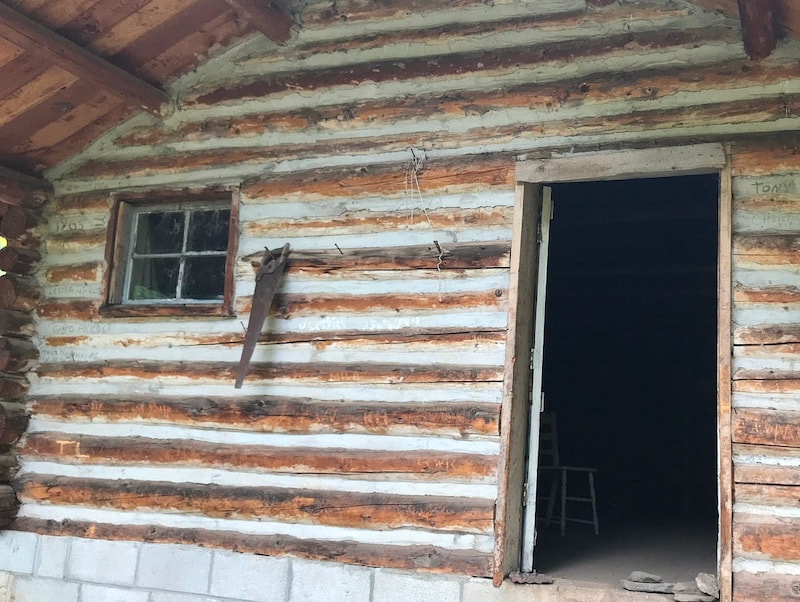
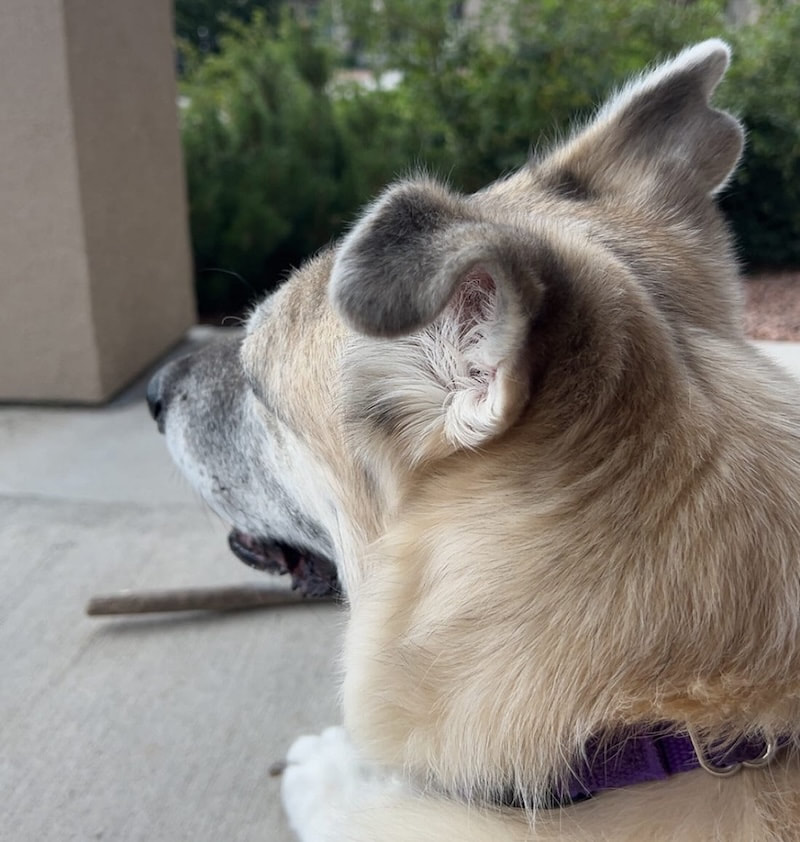




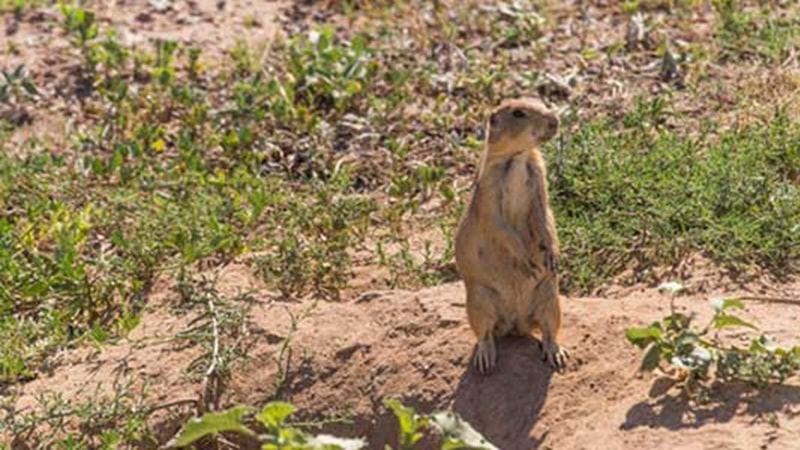
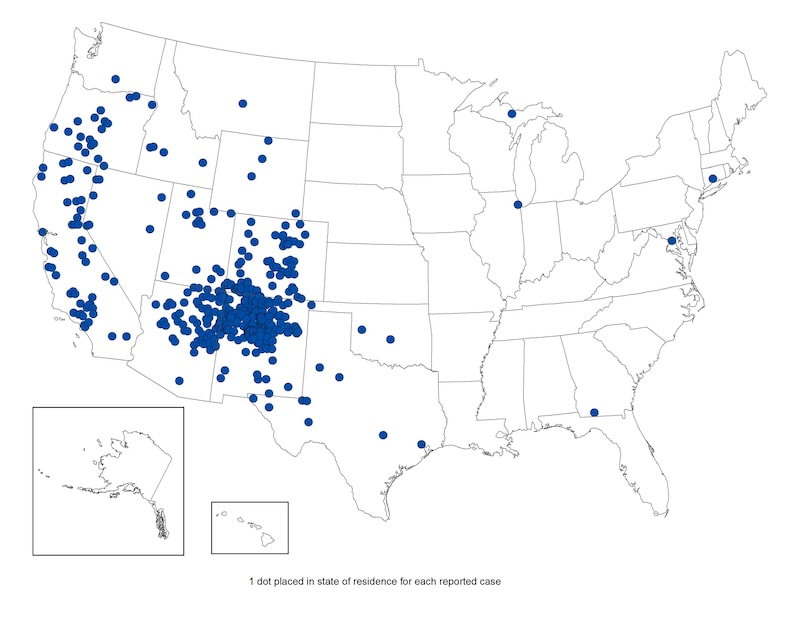
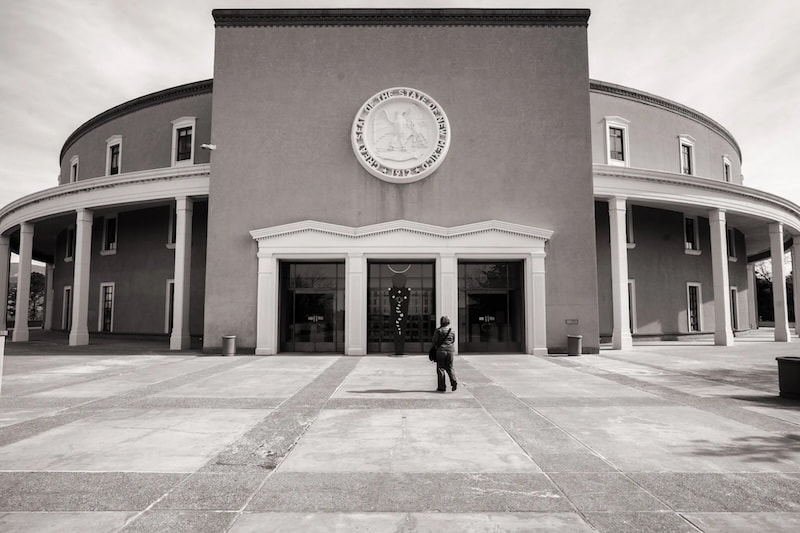
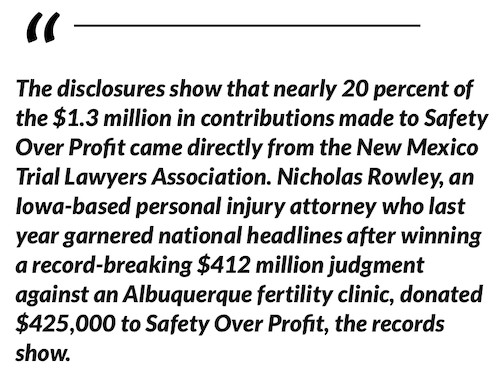
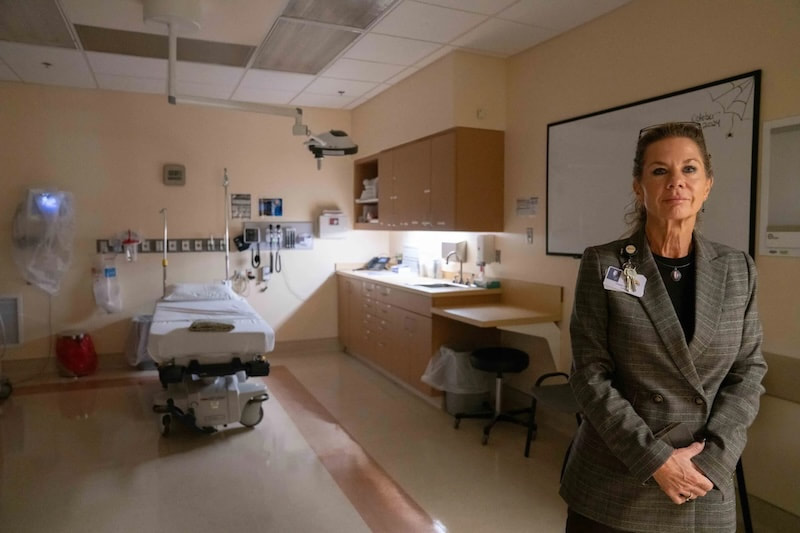
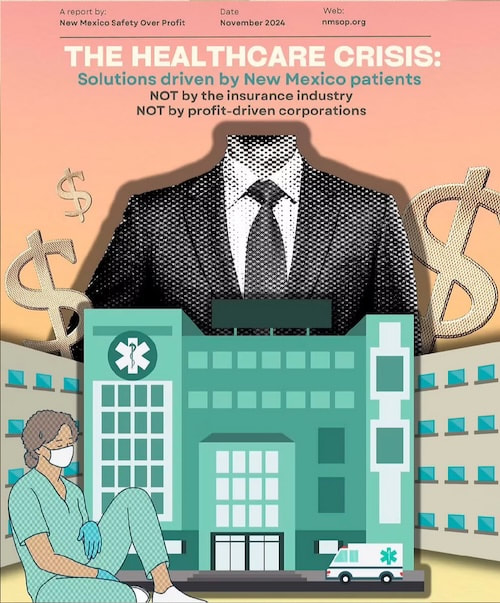
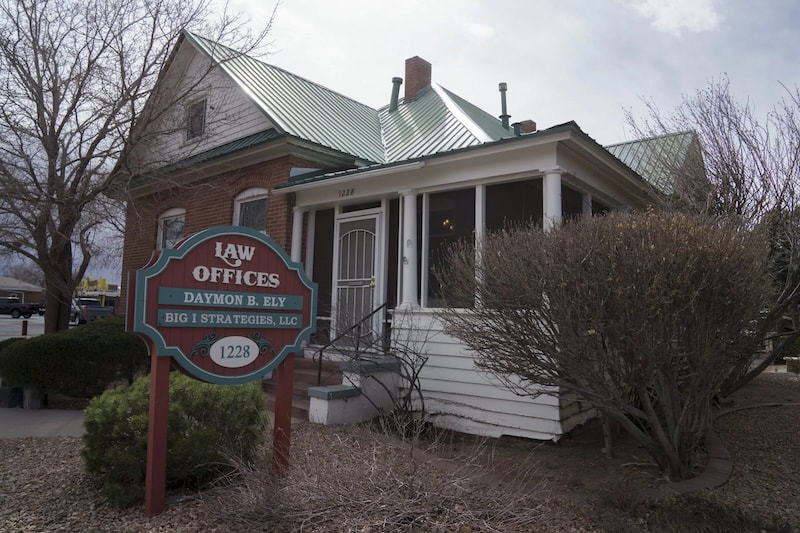


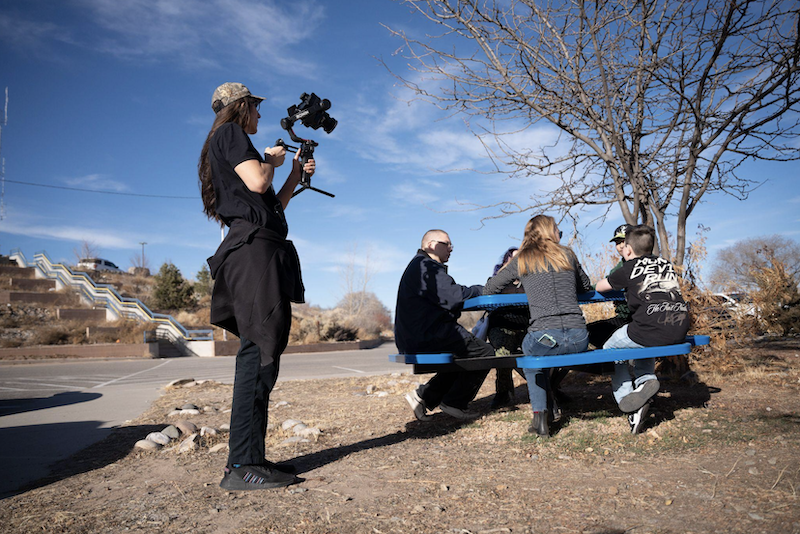
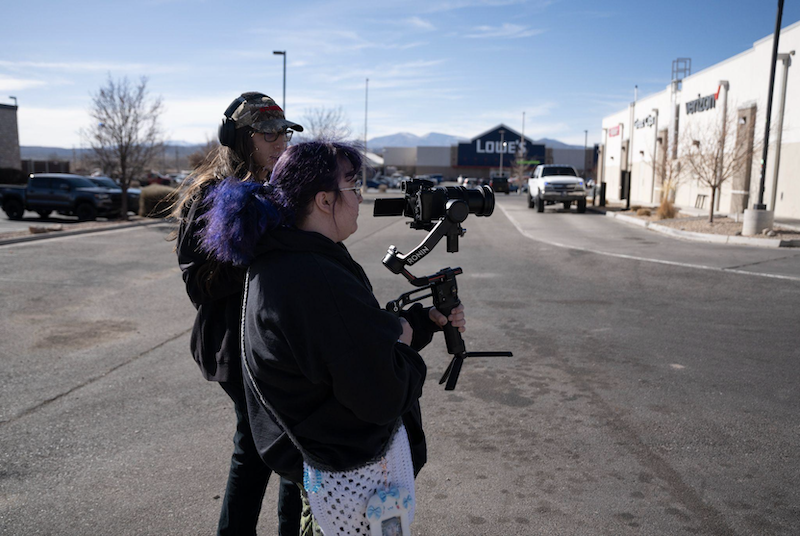














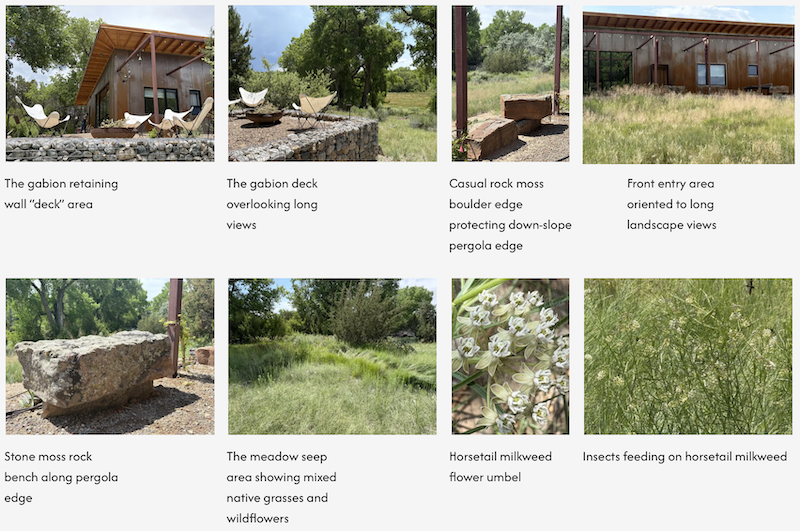
 RSS Feed
RSS Feed